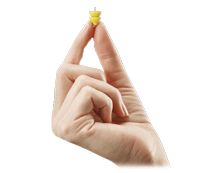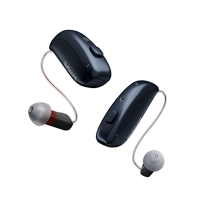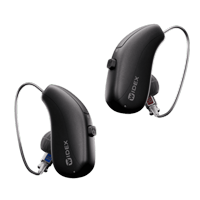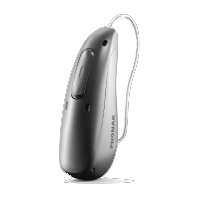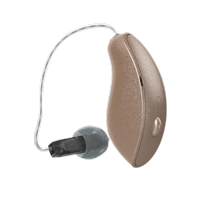If you’re considering investing in hearing aids or have recently purchased them, understanding their expected lifespan is crucial for making informed decisions about your hearing health. While hearing aids are designed to be durable, they are sophisticated electronic devices that will eventually need replacement.
Key Takeaway: Most modern hearing aids last between 3-7 years, with an average lifespan of about 5 years. However, this can vary significantly based on the type of hearing aid, quality of components, care and maintenance, and technological advancements.
Average Lifespan By Hearing Aid Type
Different styles of hearing aids have varying lifespans due to their size, exposure to moisture and earwax, and overall durability:
| Hearing Aid Type | Average Lifespan | Key Factors Affecting Durability |
|---|---|---|
| Behind-the-Ear (BTE) | 5-7 years |
|
| Receiver-in-Canal (RIC) | 4-6 years |
|
| In-the-Ear (ITE) | 4-5 years |
|
| In-the-Canal (ITC) | 3-5 years |
|
| Completely-in-Canal (CIC) | 3-4 years |
|
Research by the American Academy of Audiology indicates that behind-the-ear models typically last longer than in-the-ear varieties, primarily due to reduced exposure to moisture and earwax, which are significant factors in hearing aid deterioration.
3-4 years
3-5 years
4-6 years
5-7 years
Factors That Affect Hearing Aid Lifespan
Understanding what impacts the longevity of your hearing aids can help you make better purchasing decisions and extend their useful life:
1. Quality and Brand
Premium hearing aids from respected manufacturers like Phonak, Oticon, Widex, ReSound, and Starkey often incorporate higher-quality components and more durable materials. According to industry statistics, these premium devices typically last 1-2 years longer than budget alternatives.
2. Maintenance and Care
Regular cleaning and proper maintenance can significantly extend hearing aid life. Studies from hearing healthcare organizations suggest that well-maintained devices can last up to 40% longer than those that receive minimal care.
Daily Maintenance Tips
- Clean daily: Wipe with a soft, dry cloth
- Remove batteries: Open battery door when not in use
- Use proper tools: Clean with tools recommended by your audiologist
- Store properly: Keep in a dry, cool place, away from direct sunlight
- Use a dehumidifier: Store in a hearing aid dehumidifier overnight
3. Wearing Environment
Where and how you use your hearing aids significantly impacts their longevity. Exposure to extreme conditions can reduce their lifespan:
Environmental Factors That Reduce Hearing Aid Life
- High humidity: Can cause internal corrosion
- Extreme temperatures: Can damage electronic components
- Dust exposure: Can clog microphone ports and receivers
- Physical activity: Excessive sweat can cause moisture damage
- Chemical exposure: Hairspray, cologne, and sunscreen can damage components
4. Technological Advancements
The rapid pace of hearing aid technology development often leads to functional obsolescence before physical failure. Many users choose to upgrade their devices every 3-5 years to benefit from improved features, even if their current aids are still functioning.
“While your hearing aid may physically last 5-7 years, technological advancements often make upgrading worthwhile around the 3-5 year mark to take advantage of improved speech understanding, noise reduction, connectivity options, and miniaturization.”
— Hearing Industries Association
5. Changes in Hearing Needs
Progressive hearing loss may necessitate more powerful devices before your current hearing aids reach the end of their physical lifespan. Regular hearing evaluations can help determine if your current aids still meet your needs.
Signs Your Hearing Aid Needs Replacement
Knowing when it’s time to replace your hearing aids can prevent frustration and ensure you maintain optimal hearing support:
If your hearing aids work intermittently despite battery changes and professional cleaning, internal components may be deteriorating. This inconsistency often signals approaching end-of-life.
When repair frequency increases, especially after the warranty period, the cost-benefit analysis often shifts toward replacement rather than continued repairs. Industry data suggests that when repair costs exceed 50% of replacement cost within a year, replacement is usually more economical.
Gradual decline in sound clarity, increased feedback, or distortion that cannot be resolved through professional adjustment often indicates component failure that may warrant replacement.
If your hearing loss has progressed significantly since your original fitting, your current devices may no longer provide adequate amplification, even with programming adjustments.
Extending Your Hearing Aid’s Lifespan
While all hearing aids eventually require replacement, these strategies can help maximize their useful life:
- Schedule professional cleanings every 4-6 months
- Complete annual performance checks
- Address repairs promptly before they worsen
- Update programming as needed
- Clean hearing aids every night
- Use a hearing aid dehumidifier
- Change wax guards regularly
- Handle with clean, dry hands
- Remove before showering/swimming
- Apply hair products before insertion
- Keep away from extreme temperatures
- Open battery door when not in use
Pro Tip: Consider a Protection Plan
Many audiologists and manufacturers offer extended warranties or protection plans that cover maintenance, repairs, and sometimes even loss. These plans can be cost-effective for extending device lifespan, especially for active individuals or those prone to misplacing items.
The Economics of Hearing Aid Replacement
Understanding the financial aspects of hearing aid replacement can help you plan effectively:
Cost-Benefit Analysis: Repair vs. Replace
As hearing aids age, repair costs often increase while the device’s remaining useful life decreases. Audiologists generally recommend considering replacement when:
- The device is more than 4 years old AND
- Repair costs exceed 50% of a new device OR
- The technology has significantly advanced since purchase
Financing Options
Many hearing healthcare providers offer financing plans to help manage replacement costs:
- Monthly payment plans (often interest-free)
- Healthcare credit options
- FSA/HSA compatibility
- Insurance partial coverage (varies by policy)
Conclusion: Planning for Hearing Aid Replacement
The average hearing aid lifespan of 3-7 years means that replacement should be a planned part of your long-term hearing healthcare strategy. By understanding the factors that affect device longevity and implementing proper care routines, you can maximize your investment while ensuring consistent hearing support.
Regular consultations with your audiologist about device performance, alongside annual hearing evaluations, provide the best framework for determining when replacement will optimize your hearing experience and quality of life.
Remember that while the physical device may continue functioning beyond the typical lifespan, technological advancements often make upgrading worthwhile to benefit from improved features that better address your evolving hearing needs.
Turning Life up Through Better Hearing
For over 30 years, California Hearing Center has been helping people improve their lives through better hearing. Whether you’re concerned about your current hearing aids’ performance or considering your first pair, our experts can help you navigate your options.
Or call us at (650) 342-9449
Keywords: hearing aid lifespan, how long do hearing aids last, hearing aid replacement timeline, extending hearing aid life, signs to replace hearing aids, hearing aid durability by type, hearing aid maintenance, BTE vs ITE lifespan


